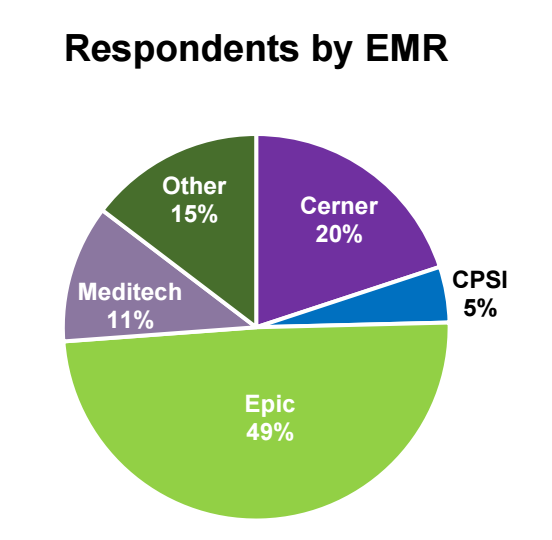Content Strategy
Aligning Your Strategy to the Kinds of Content Healthcare Buyers Are Looking For
By Megan Williams on December 6, 2023
So far in this series, we've explored how to use an existing market research report to inform healthcare content marketing and content strategy. We've kept things pretty high level, but today, we're going to dig into specifics.
Using the HFMA study, Health System Purchase Plans 2023, I'm going to walk you through the specific information I would pull from this report and how I would translate it into content strategy. The reason this type of study is so valuable for marketing leaders is that it helps you build an informed understanding of the purchasing priorities of healthcare organizations—a unique opportunity to align your product and overall marketing strategies and to craft a content strategy that paves the way to increased sales and accelerates business goals.
A quick and important reminder: While the recommendations below are specific to this report on revenue cycle buying habits, the tactics are universal, so any vendor selling into healthcare will be able to find some level of application.
Content that speaks to the top-of-mind concerns of key decision-makers
One of the most insightful takeaways from this report is the importance that health systems place on ROI.
Conversations with over 300 health system executives revealed that, even under the economic pressures that plague the industry, they're very open to buying—from the right vendor. The report shows that vendors should prioritize testing ROI-forward content and discusses the importance of comparing solutions to EMR options.
Demonstrate strong ROI in your case studies
This will be the most straightforward application for most vendors.
You're likely sitting on stories of strong returns and clients who know just how much they saved by working with you. I've worked with some vendors who track this pretty closely, but even if you don't have specifics, you still have options.
I worked with one company that, for legal reasons, couldn't publicly report ROI in exact numbers. Instead, we identified a couple of clients who translated the return on their vendor relationship into the FTEs they didn't have to hire and the time their staff saved running quarterly reports.

Publish infographics and videos comparing to an EMR
A key theme of the HFMA study was the decision makers' interest in comparing vendor solutions to an EMR. Vendors who offer bolt-on solutions can tackle this directly with visuals that quickly address comparison questions.
Consider infographics and videos that either walk through ROI analysis, features, and functionality or clearly show how your solution provides superior returns to an EMR. Again, if you don't have exact numbers, it's time to get creative and reframe—speak about efficiency and opportunity cost.
Remember that even if you aren't targeting primary decision-makers, this type of content can still be powerful. These visuals can also be helpful to potential advocates at hospitals and health systems who might be open to a new vendor but need materials to make their case.
Customize your content with audience-specific hubs on your site
Decision makers within hospitals and health systems work toward the same high-level goals but often live in different universes. The day-to-day concerns of a CFO could be light-years away from that of a revenue cycle director. Personalized content for this type of organization is more effective if merchandized within a role-specific web experience. A personalized hub within your website can help you test the effectiveness of different content types and the responsiveness of roles to content marketing.
Test this with a few of the titles that you've found to be most responsive to your content. A simple microsite tailored to a few overlapping titles or roles is worth testing.
Take some chances with prices and fees
You should focus on this deeper in your funnel, but the study clearly outlines the importance health systems place on fees and pricing models when comparing vendors.
Consider a late-funnel document that covers your approach to contingency pricing, flexibility with implementation costs, and free trials.
Pro Tip: Don't bury the lede. Test leading with top-of-mind topics in framing and even headlines. "Health System Triples ROI on Software Investment in 2 Years" might be a title that perks the ears you most need to move.
Manage relationships at the right level with the right content choices
Years of accelerating M&A activity means there is a preference for decision-making at the health system/corporate level. This means your content should speak directly to these titles and concerns and that content distributed to these roles should address themes specifically from the corporate level.
Build out education to maintain relationships
The health system buying process can be incredibly long and complex, pulling in health system leaders and buying groups at the individual hospital level. The HFMA study stresses the importance of establishing and maintaining relationships at the corporate level—a task educational content is perfect for.

Suppose your organization has specific insights into the challenges at the health system level. In that case, an educational content series is a great place to showcase that knowledge to build familiarity and trust while proving you understand the nature of their problems.
Navigate the RFP process by addressing the competition
If you've got a strong understanding of how you stack up to competitors, it might be worth creating content specifically with the RFP process in mind.
I had a SaaS client who lost a major deal because their competition got to prospect leadership ahead of them and put in a lot of work in (incorrectly) shaping their perspective on software uptime. By the time they had a chance to explain the truth and why their solution was actually superior, it was too late.
Don't hesitate to leverage content as a leg up on the RFP and vendor vetting processes, especially if you know your market might not have solid understanding of your key differentiators.
Don't neglect the little guys
Even if you're addressing a health system prospect, the HFMA report emphasizes the fact that individual hospitals are still likely involved in the review and selection process. This is where a hospital-level focus on awareness content can be effective.
Brand videos, informative blogs, and hospital-targeted social media should all be on your shortlist of content options. Your formal RFP should not be your first impression.
Pro Tip: Because there are so many layers to this type of prospect, you'll need to balance having a consistent and unified conversation with personalization as you speak to multiple roles and titles at both the health system and hospital level. Content atomization is your answer.
Use a platform focus to create content that persuades
I love this angle because I've heard from sales professionals multiple times that it triggers deeper interest. But this runs deeper than mentioning CPSI or Meditech in a case study title.
The HFMA study breaks down purchase plans by vendor, ranking their intent to purchase specific RCM and finance solutions by technology—including options like denials/appeals management, AI-based coding, and digital front door solutions. This information can be incredibly valuable in guiding your product marketing content.

Consider product and product demo videos, website pages, customer success, and case stories framed at the product level. Also think about content for your sales team to ensure they can have informed consultative conversations about the solutions that are hot sellers with hospital and health system leaders right now.
All these options can be atomized by both EMR and role.
Pro-Tip: Arm your sales team and get these materials out in prospecting emails, role-specific conferences, and social.
If you've found this information valuable, I invite you to check out the additional articles in this series:
- 8 Practical Ways to Leverage Healthcare Market Research in Your Content Strategy
- Quick Start Guide to Research-Informed Content for Healthcare Vendors
Primary research like this is published pretty frequently, and you'll definitely have future opportunities to apply all the tactics covered. (But this is just the beginning.)
